In the now extinct language of the |Xam Bushman people of Southern Africa |Xau or |Xaun meant to shoot with a magical arrow or go on a magical expedition.
My people had a word – No, more than a word – |Xau flowed through us – Lived in us – Connected us – Then it left us
When it went away – This word that is more than a word – It tumbled down the mountains – And out of our mouths – A precious possession… stolen, gone
Nothing has come to fill the vacant house of the |Xau – Magic does not live in the home of the new words – Disconnected broken arrows – Going nowhere
Our children play with empty words – That do not speak of mystical journeys
|Xau – My people had a word
|Xau – So much more than a word
|Xau – Melodies no longer heard
But deep in the earth there is healing – The land awaits our right doing – Ancestral Voices guide us back – To other Magical Arrows – And the melody of words that are more than words
To the |Xau of now
By Sylvia Vollenhoven
It is hard to restore our connections with the land, our love and respect of all that is, without finding the |Xau of now.
When I am a young girl growing up in apartheid South Africa my mother tongue is Afrikaans, a fascinating hybrid language with slave ancestry and the youngest on our Continent. It scoops up Asia, Africa and Europe in its arms and is closer to our hearts than English (the lingua franca of South Africa). When I am a young woman grappling with issues of identity, apartheid propaganda declares a version of my mother tongue to be the linguistic glue for driving the white Afrikaner people from racist nationalism to 20th Century nationhood.
For the mixed descendants of the colonials and the slaves (brought to South Africa mainly from Asia and other parts of Africa) our version of Afrikaans has been until recently the only tool we have had to build and solidify an African identity.
But now things are changing. We are going back into history to fetch precious intangible possessions that have been ripped out of our existence, out of our beings. There is talk of colonial overlords historically knocking out the front teeth of my people so that we could not pronounce the clicks of our indigenous languages. But in Southern Africa people are healing and relearning the languages that have survived, mainly Khoekhoegowab or its closest equivalent Nama.
The word concept |Xau, unearthed in an ancient dictionary, is a powerful example of what we have lost. The newer languages, inept by comparison, that have come to replace the rich indigenous lexicons do not have a word that comes close in meaning to “shoot with a magical arrow”.
When our languages were destroyed, we lost important elements of our culture and we lost entire civilisations. We have lost perspectives and a way of being in the world. Emulating a colonial way of expressing ourselves, our connection with the land and with the divine aspects of ourselves has been broken. This disconnect this brokenness, fuels self-destruction and in the process aids the destruction of the earth that sustains us.
Tumbling around in the maelstrom of the modern world, in search of what we have lost, we need to find those magical arrows. We need to find the |Xau of now to restore our relationship with the land and the divine within. Only then can we return to valuing the earth once more. Only then will we begin to heal what has been destroyed without and within.
Sylvia Vollenhoven is an indigenous South African author, playwright and filmmaker. Her seminal work on Khoesan identity, The Keeper of the Kumm, was awarded the nation‘s prestigious Mbokodo Prize for Literature and short-listed for all the major SA literary awards.
More about the |Xam language
The Language from which the word |Xau or |Xaun comes is |Xam (hear how to pronounce this word)
ǀXam is regarded by some as an extinct language of the Bushman people (a reclaimed and preferred term) of Southern Africa but its resonance can be found in modern Khoikhoi languages on the sub-Continent. The main, related modern language that has survived colonial devastation is Khoekhoegowab. |Xam was spoken by the ǀXam-ka ǃʼē people. This name or grouping was more a regional and geographic distinction than anything else. Much of the scholarly work on ǀXam was performed by Dr Wilhelm Bleek, a German linguist of the 19th century, his researcher sister-in-law Lucy Lloyd and their ǀXam-ka ǃʼē teacher informants ǁKábbo, Diaǃkwāin, ǀAǃkúṅta, ǃKwéite̥n ta ǁKēn, ǀHaṅǂkassʼō and other speakers. As a result, there is a surviving corpus of ǀXam that comes from the stories told by these individuals in the Bleek and Lloyd Collection at the University of Cape Town. Bleek’s daughter Dorothea added to the work, compiling a “Bushman Dictionary” that was published many years later.

This work is licensed under a Creative Commons Attribution-NonCommercial-ShareAlike 4.0 International License.
Learn more
Lakota flute music by Tiokasin Ghosthorse
Read the full post about the word Wíyukčaŋ
Tiokasin Ghosthorse, Cheyenne River Lakota, speaks internationally of Peace, Indigenous and Mother Earth perspective.
A master musician of the ancient Lakota flute, he performs worldwide and has featured at Cathedral of Saint John the Divine, Lincoln Center, Madison Square Garden, Metropolitan Museum of Art, Ruben Museum, Morgan Library, Apollo Theatre, United Nations, and uncountable other venues.
Butterfly against the wind
Sunrise Moon
Tiokasin’s recent album Akantu: Origin Series
“This was a gathering of Original Nations and notions of beings with the elemental evolution of letting the mystery go where it will with music, spoken word and presence.”
“The music, which I call ‘improv-intuition,’ is intended to remove listeners from the constant hustle and bustle of cities and urban areas everywhere in the world and draw them into the stillness of my world,”
“Mine is a world where simple listening and Mother Earth transcend all other concerns.”
– Tiokasin Ghosthorse

This work is licensed under a Creative Commons Attribution-NonCommercial-ShareAlike 4.0 International License.
Hyká
The stones are the word, and the latent memory of our territory and of our ancestors. They are proof that they walked through these mountains. They are grandmothers who know a word, ancient, deep and complex; words of advice that can only be heard through patience, deep silence, and the other senses.
Rocky shelters that guard and make life possible, firmly hold our struggles and our thoughts. Their skin and their scars are witnesses to the passing of time, and in turn, they are living proof of our survival.
When we meet them, we sit down to look inwards, to our past stored there. We dream to remember the paths of the ravines and the song of the birds of yesterday. We ask about their purpose and teachings.
The hyká are bridges that have allowed us to remember and legitimize the struggle for the wellbeing of our people.
The hyká are our grandparents and we will defend them.

This work is licensed under a Creative Commons Attribution-NonCommercial-ShareAlike 4.0 International License.
Learn more
- #soscerroseco: an active campaign to halt mineral extraction on sacred territory outside Bogotá. Search for this hashtag on Facebook.
- COLECTIVO DE EDUCACIÓN PROPIA PEDAGOGÍAS ANCESTRALES
- CONA – Pedagogías Ancestrales on Facebook
- Fundación Zaquenzipa: wellbeing from ancestral thought (includes Spanish-Muisca dictionary)
Ïe cho
Ïe cho
Our ‘living well’ is Ïe cho (good path); it is being aware that we are all part of Mother Earth.
It is devoting our life as human beings to uniting with the territory we inhabit and in which we’ve been sown.
Ïe cho is taking care of the territory.
It is taking care of our relationship with birds, the wind, the earth, water, fire, trees, plants, stones, our ancestors and all the spirits that walk with us.
It is taking care of our family, our traditions, our memory. It is forgiving the past and making peace with it.
By living Ïe cho we realise that a development model that is against life has been imposed on us. Mining, dams and extraction of hydrocarbons destroy mountains and lakes and at the same time, peoples and their memory are destroyed as well.
In order to live in accordance with Mother Earth, she enables us to talk to and learn from medicines, food, the practice of weaving, offerings and the spirits of the territory, which also live in us.
Ïe cho is resisting in community, making our relations balanced in reciprocity and common-unity, and learning together from difficulties.
Walking Ïe cho is understanding that when we become earth again, out body returns to our mother.
We need to walk Ïe cho in order to understand it.
Have you said we, Indians, will not go to heaven because when we die our soul also dies, or goes to the Páramo and becomes a deer or a bear? [Question taken from the confessionary included in the anonymous manuscript N° 158 (17th Century) at the National Library of Colombia]

This work is licensed under a Creative Commons Attribution-NonCommercial-ShareAlike 4.0 International License.
Learn more
- COLECTIVO DE EDUCACIÓN PROPIA PEDAGOGÍAS ANCESTRALES
- CONA – Pedagogías Ancestrales on Facebook
- Fundación Zaquenzipa: wellbeing from ancestral thought (includes Spanish-Muisca dictionary)
Reflecting on the Sardaks
Paintings by Tsetan Angmo, Ladakh, India
Read the full post about the word sardak
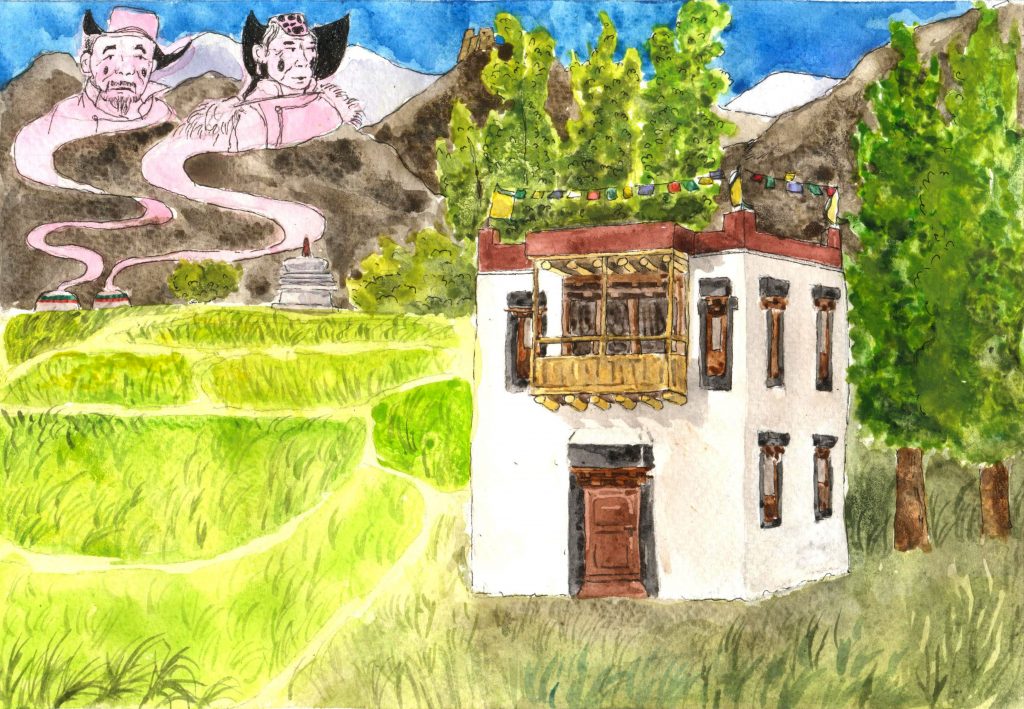
پفّ or śaff
We want to take you to Southern Oman, and into the practice of desert tracking, as described in two endangered Semitic languages: Mehri and Shehret. The word śaf in Mehri (śɛf in Shehret) means ‘unexpectedly, it turns out to be’ and is closely related to words meaning ‘track; print’: śaff in Mehri (śɛf in Shehret). Khalid Ruweya al-Mahri, a Shehret speaker, and Mehri colleagues helped us to understand this relationship. Tracks, like fingerprints, reveal an indisputable identity that may otherwise not be recognised. My fingerprint is unique to me, and my footprint is likewise unique. In the desert from afar you may believe you are following a camel from one herd, but on close examination of the tracks of that animal discover you are tracking a camel from a different herd. The track, therefore, reveals the unique identity of an animal or a person, and by extension śaf has come to be used where an action, object or event that was originally thought to be one thing unexpectedly turns out to be something else.
Younger speakers in Southern Oman might use śaf in sentences such as: śīnək ḥaybīt əkabs ḥaybayti śafs ḥaybitk ‘I saw a camel I thought was my camel, but it turned out to be your camel’. But they might not appreciate the link between this turn of phrase and the vital social importance of tracking for Mehri and Shehret livestock herders in the past. The track reveals identity without ambiguity, and skilled tracking can be a question of life or death. Well-known trackers are able not only to identify their own livestock within a foreign herd, but also to distinguish the bare footprints of members of their community from those of outsiders. Shehret-speaker, Faisal al-Mahri, described a well-known tracker being asked whose footprints he saw in the sand. The tracker gave the name of a man who was believed at that time to be in Kuwait. His companion told him it couldn’t be that man’s prints. The tracker insisted he was right. When they returned home, it turned out the traveller had returned from Kuwait the day before. The tracks were indeed his.
In a recent discussion, a teenage Shehret speaker asked whether the word śεf came from śof ‘hair’. Ali al-Mahri, a bilingual speaker of Mehri and Shehret, explained this lack of awareness among young people living in the main town of Salalah as resulting from a lack of earth or sand paths in the town: tracks cannot be imprinted on solid asphalt. The progressive paving of the environment, as social, economic and environmental forces shape Mehri and Shehret society, mean that the activity and terminology of tracking is being lost.
Śaff, Abdullah al-Mahri
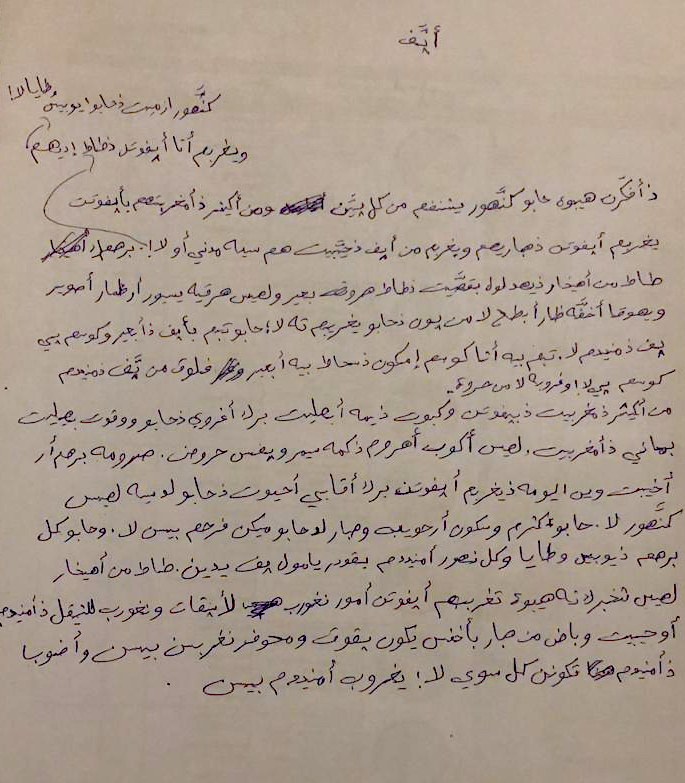
In the past, people thought they could benefit from everything. From their deep knowledge of tracking, they recognised the tracks of their own camels, and they knew from a camel’s tracks whether it was pregnant or not. In the past, people didn’t wear shoes, and they could distinguish the prints of each other. I once heard an old man tell the story of someone who stole camels. After he stole the camels, that man just walked on stones. He deliberately didn’t place his feet on the earth so that people wouldn’t be able to track him. People followed the camel tracks, but they didn’t see any tracks of people. They followed the tracks to the place where the man slaughtered the camels. In that place where he had slaughtered the camels, they searched for people’s tracks but didn’t spot anything. So they had absolutely no idea who it was who had slaughtered them. From people’s deep knowledge of tracking, that word entered the Mehri language and a word emerged with the meaning of ‘knowledge’. As you could say, for example, I think that tree is a sīmər tree, but it unexpectedly turns out to be an Acacia tortilis tree. Nowadays very few people have the ability to identify tracks of camels and people. I think this is because people’s lifestyle is no longer like it was in the past. There are far more people, and they live in towns. And now people aren’t as keen on camels as they were. Now people all wear shoes and they can make new prints from the shoes that they wear. One old man when I asked him how he was able to recognise the tracks of camels and people said, ‘We know them from the stride of the person or the camel. We know how heavy the person or the camel is. And some camels’ tracks have splits or have hollows. We know them from that. And in terms of people’s toes, people all have differences in their toes. They are all different. We can identify who it is from their toes.’
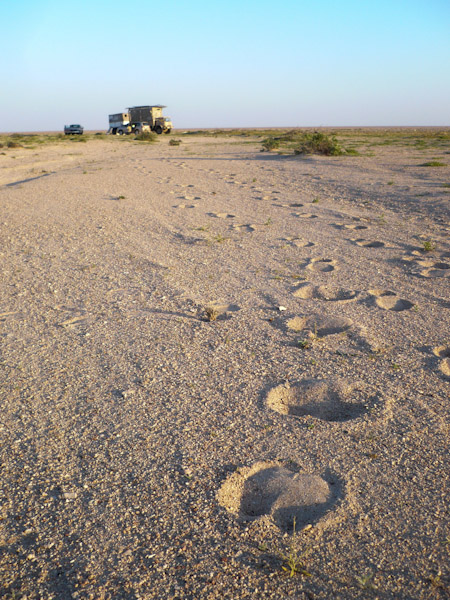
Thomas de Burgh – 2012 – Halma, Oman www.nomadsinoman.com
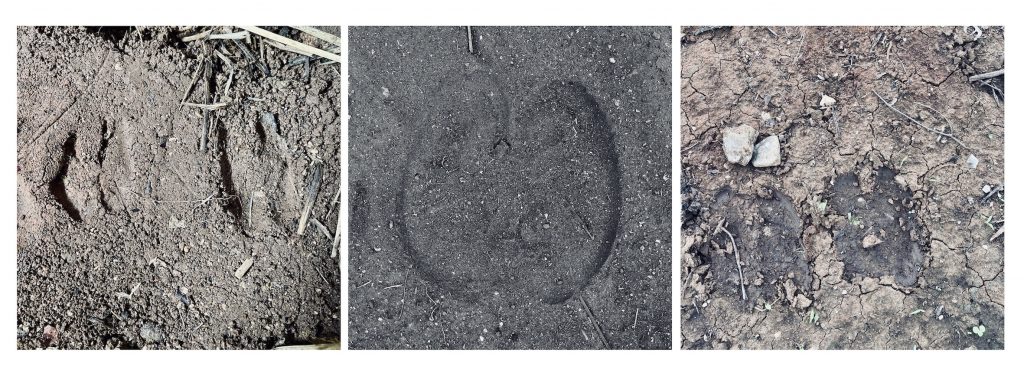

This work is licensed under a Creative Commons Attribution-NonCommercial-ShareAlike 4.0 International License.
Learn more
- Centre for Endangered Languages, Cultures and Ecosystems (leeds.ac.uk)
- Modern South Arabian Languages | School of Languages, Cultures and Societies | University of Leeds
- THE DOCUMENTATION AND ETHNOLINGUISTIC ANALYSIS OF MODERN SOUTH ARABIAN | Watson C E Janet
- Bibliography of Modern South Arabian Languages (PDF; 0.5MB)
Meeting Noongar elder Kathy Yarran
The first time I consciously recognized the intimate relationship between a landscape, language and people, was meeting an amazing Noongar speaker, Kathy Yarran, in Western Australia. I was living for a short while in Kellerberrin, a small farming town, hardly a town, just a few basic shops straddling the Great Eastern Highway on the edge of the farm belt and desert and a three-hour drive inland from Perth. Kathy was the oldest living Noongar resident and the last fluent speaker in town when we met, and possibly one of the wisest people I have encountered. She had a way of looking and speaking, which seemed to penetrate to your deepest thoughts and emotions.
Continue reading > “Meeting Noongar elder Kathy Yarran”ས་བདག or Sardak
Relearning to live with ghosts
Kayi, Kayi; Sardak na Doa-dak. “The owners of the land and the rocks, please accept our food”. Kayi is an odd and old pronunciation of the Urdu word Khao, meaning eat. Sardak is composed of two words, sa (land) and dakpo/mo owners of the rocks. Doa is rock.
The word sardak means much more than the English ‘owner of land’; The roots of the word, with their tentacles, meander and take us to the first person (the original sardak of a household) who established the first farm, which gave him/her the food. The farm that led to the formation of his/her household. The household members created the first romkhang; the place where the dead person’s body was burnt to convert it back to soil and rocks. The following generations also converted to dust in the same romkhang. Siblings parted ways and the number of households grew; new romkhangs were made. The new, however, must have a handful of the soil of the original romkhang. So all the people who found a place in the romkhang are dakpos; owners of the land (sardak).
Romkhang, is an odd word. It means the house (khang) of the dead body (ro). But the body is not just a body; it also is soil/land. Dust in any romkhang is a mixture of the bodies of the ancestors. I write this sitting in a house not far from our romkhang. The romkhang is located amidst stones, rocks and willow trees. In the high altitude, trees have to be cultivated for fuel and to build houses. These trees were planted by my grandfather, one of the later sardaks. His name was Tundup Paljor, who died in the 1980s, much before I arrived in human form. Paljor’s wife Tashi Chuskit and his two sisters, both named Zangmo co-worked to plant those trees. The soil in our romkhang also contains the body of my women ancestors. The grove of trees, a feature of the village landscape, owes their existence to them.
If I zoom out of the grove, I see terraced farms created and tree gardens planted by the sardaks of other households. The landscape from this vantage point had been indelibly marked by the presence of the sardaks. The farms, the trees, the old houses, the repaired monasteries, the crumbling stupas, the foot trails, the wooden bridges, the lhatos (the residences of benign spirits) and others were created by the sardaks. They and their livestock left trails. This landscape reminds me of our ancestors. They are absent but present, they are like ghosts. The ghosts of sardaks populate the landscape.
Zooming out further, we see that the T-shaped valley in which my village is located is surrounded by majestic mountains, formed 50 million years ago when two tectonic plates collided. In this landscape, the humans showed up much later. Yet the insignificant humans have marked significant marks on the landscape. The sardaks brought water via irrigation canals from the stream fed by the Shali Kangri glacier to their trees and farms. The ways of being of the sardaks enabled them to live here for thousands of years.
The landscape was constantly in the making. It still is. New houses built from imported cement, iron, wood, and paints are prevalent. Now, the three ends of the T-shaped valley are paved with motorable roads. All roads connect the village to the national highway and thereby to circuits of the global economy. The western side is fenced by the iron net to stop napos, a wild ungulate, from entering cultivated fields. Villagers opine that the lack of grass in wild pastures is the reason for their invasion, which in turn points to low snowfall in the winters. Metal fencing is supposed to be the defence against a changing climate. We are told that the glaciers in the Himalayas are melting quickly because of the settling of black soot on the ice sheets. One of the sources of soot are diesel engines. The imported cement and metals are implicated in the decreasing size of the glaciers. Two villages in Ladakh, Kumik and Kulum have had to be abandoned because their glaciers melted and springs dried up. Now, only ghosts live in these villages. The concrete houses, behemoth hotels, and metal fences are also haunted. The ghosts of past ways, with their human limitations, haunt these places. The ghosts are everywhere, if only we could learn to see.
Back to the romkhang, during Losar (Ladakh’s New Year) festivities, the living members of the household take food for the sardaks at romkhangs. It is during this time that in the Sham region of Ladakh these words are uttered: Kayi, kayi; sardak na doa-dak. Please accept our food. This practice is called sheme. Sheme is a reminder of the legacy of those who lived before us. I had never seen Tundup Paljor, but as a child, I took food for him and his other roommates.The modern encroachment of dualisms – of body/soil, life/death, subject (I)/object (landscape) – are destroying practices like sheme and blindfolding us to notice the connections and co-origination of everything. With the connections hidden, our landscape exists out-there to be gazed upon (by tourists) and to be tamed (by engineers and contractors) and so on. The real blind faith is to render the landscape dead. Opposed to bland, dead and feminised landscape, waiting to be tamed, sheme illuminates and enchants with magic, with ghosts. It invites us to relearn other ways of looking. It reveals the living history of our land via the ghosts of the ancestors, the sardaks.
This piece of writing was inspired by the work of Donna Haraway, Tim Ingold, Anna Tsing and native scholars.

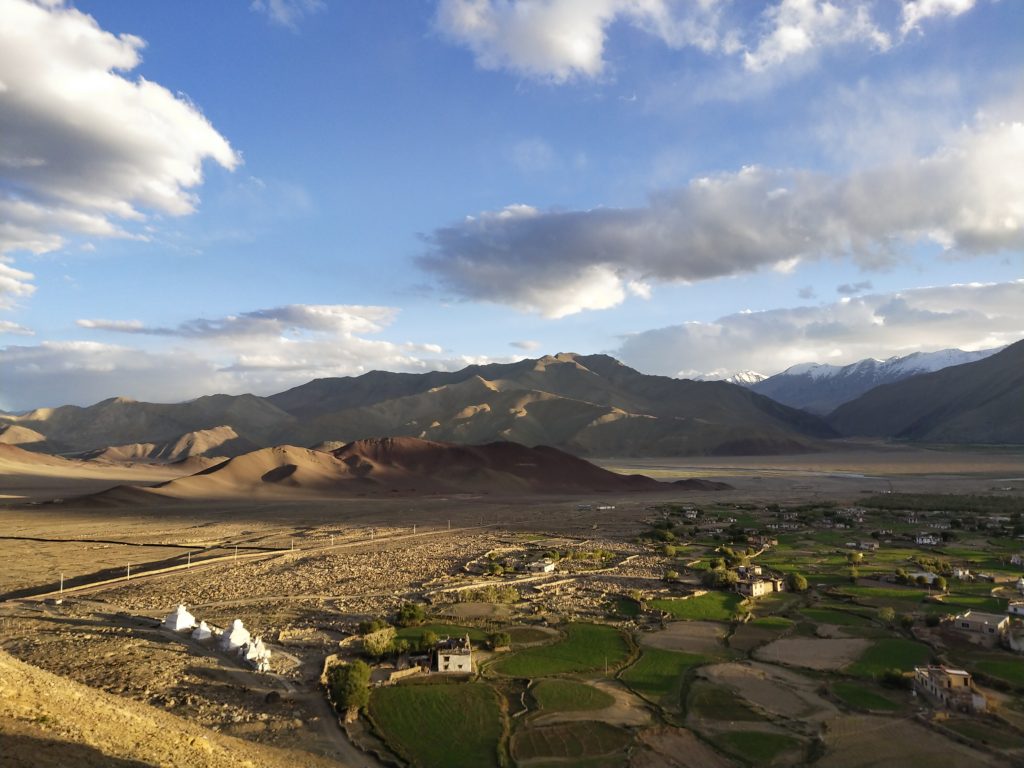
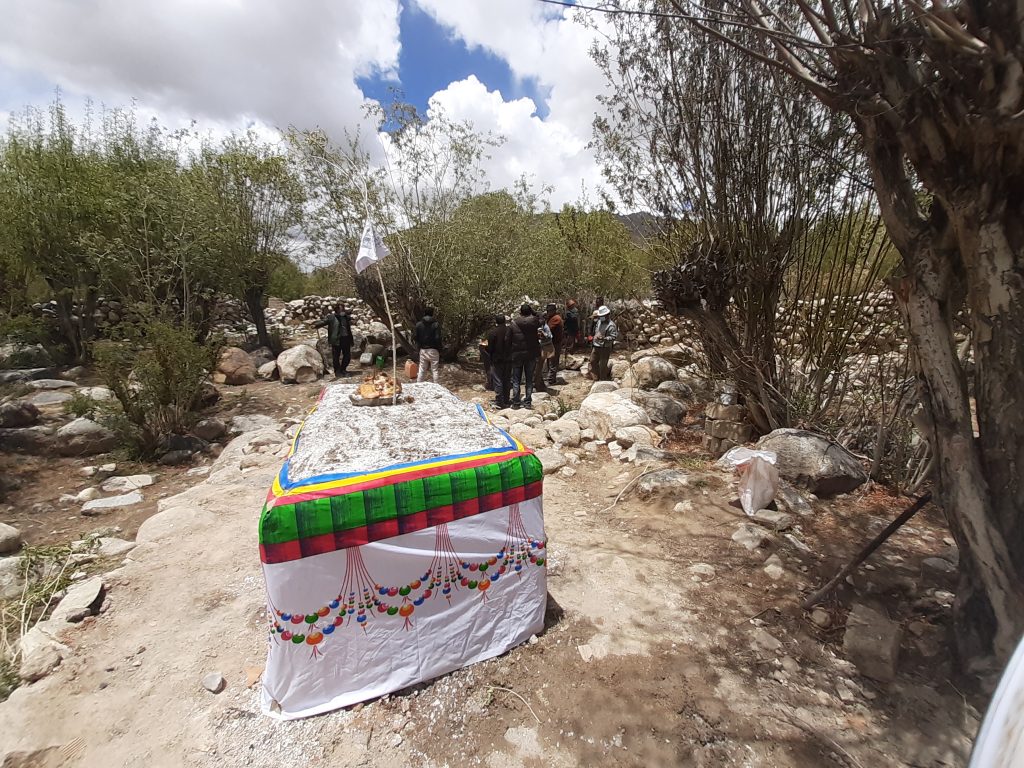
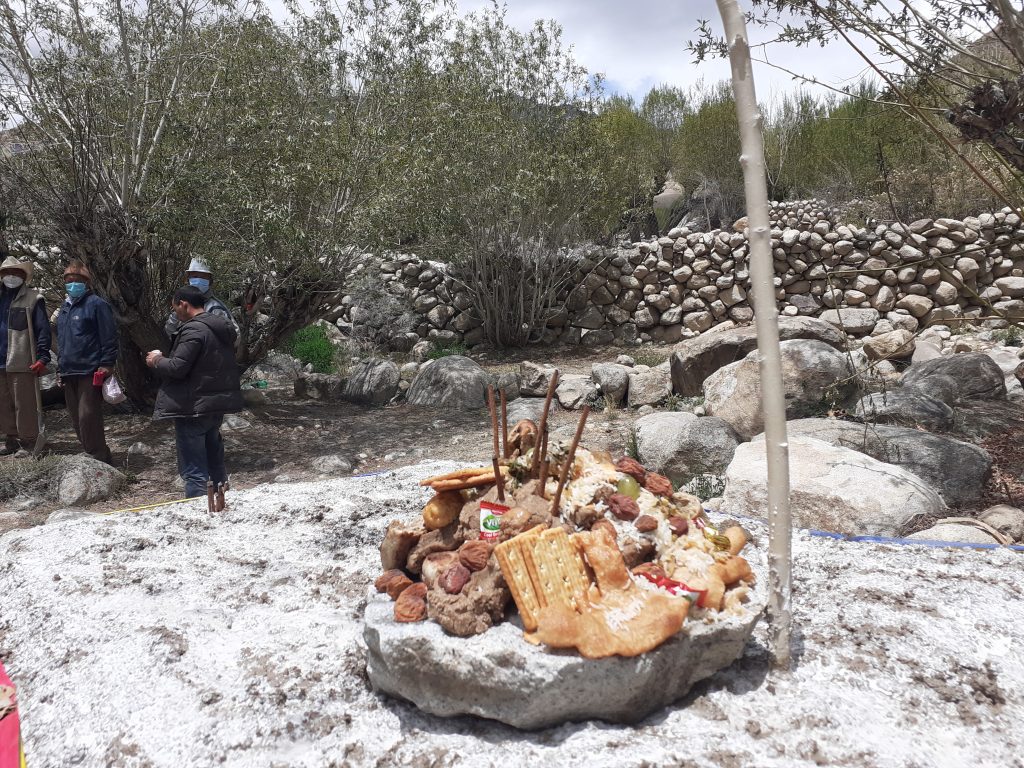

This work is licensed under a Creative Commons Attribution-NonCommercial-ShareAlike 4.0 International License.


